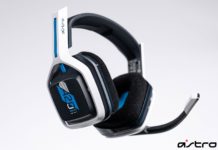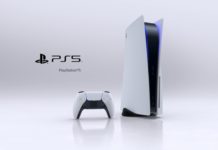to take on the world’s most challenging obstacle course. Most of its designs
appear to have come straight from the world of video games: spinning
platforms, barrel rolls, thin pillars – these are not your everyday
challenges… Unless your everyday includes rounds with Mario, Lara Croft, and
the Prince of Persia.
Some of a ninja’s
attributes are tested in Ninja Reflex, a new Wii game that combines tidbits of
WarioWare with teaspoons of Trauma Center and Red Steel. The game is all about
speed; precision is a close second, but it’s not an overwhelming factor.
Players will be tested on their ability to swing, swipe, shake and drag while
maintaining their sanity. It is the ninja way to see through each challenge,
no matter how difficult or cumbersome, and come out a winner. But does this
have anything to do with entertainment?

Throw Me a Star
Shuriken, Hashi, Koi, Katana, Hotaru, Nunchaku.
These are the six trials used to prove your prowess as a warrior. Humiliation
isn’t allowed but the game won’t kill you for it – when a player loses, he or
she may try again without repercussion.
Though several challenges are held within each
trial, most are locked at the start of the game. New objectives become
available with each belt increase. You’ll begin the game at the lowest point.
To move on, complete the existing objectives within five of the six trials.
Following that accomplishment, the player must complete a belt trial that
re-tests your skills at three of the trials you’ve previously completed. After
that, the next batch of challenges are ready to be conquered.
Of the six, Shuriken is the one gamers will be
most familiar with. With the Wii remote pointed at the screen, push the B
button to lock-on to an enemy. Point the square cursor at any one of the
targets to attack a specific enemy. Once locked on, quickly flick the remote
to launch a throwing star at your foe (cardboard cutout or not, he’s still
your opponent). The process repeats immediately after a ninja goes down, up
until the task at hand – like defeating a specific number of ninjas – has been
dealt with.

Re: Flexible
Very soon the game retaliates by adding geishas
to the mix. They come strolling out, cardboard cutout style, and will cause an
automatic failure if one is hit. This mode is also timed: first by clock,
second by ninjas who won’t wait around for you to strike. With each new belt,
additional obstacles are thrown in to make what started as a simple game of
remote-flicking a game of attention and speed. You can’t run a rampage and
win; Geishas frown upon that.
If you’re as clueless as I was, you might think
that Hashi is an ingredient in sweet and sour chicken. In reality, Hashi is a
catching game where you must snatch a fly with chopsticks. These flies never
stop moving – unlike the real thing, they aren’t looking for a place to rest
and barf. Simulating the act of chopstick grabbing, players need to aim the
remote just above the fly and push the A and B buttons simultaneously. If
you’re fast, the fly is yours. If you’re slow … it’ll still be yours, but
only in the first level. After that, even a jar of honey couldn’t help a
slowpoke.
Like Hashi, Koi is a catching game. But instead
of grabbing flies while they, uhh, fly, your goal is pull fish from the
safety of water. Small, medium and large sizes are available, and contrary to
market value, the smaller fish are better. The reason is obvious the second
you see them in action: they’re much faster swimmers, and their smaller size
makes ’em hard to catch. Fish can only be grabbed when they surface, an act
that lasts about 1.5 seconds for the big fish, 1 second for the medium-sized
fish, and less than that for the puny speedsters.

Acid Reflex
The Katana challenges draw upon your inner
swordsman. Hold the remote uphigh and sideways (the power button should face
your left) to block a downward strike. Hold it upright and to the far left to
block left-side attacks, and do the opposite to prevent right-side slashes
from bruising your flesh. No limb loss or permanent scarring is possible;
these swords are made of wood. Your remote, however, is made of plastic and
may break if thrown repeatedly against a wall. Try to keep that in mind when
the frustration of these Red Steel mechanics overtakes you.
Hotaru is the strangest mini-game I’ve seen
since WarioWare was released last year. Rather than catching flies with
chopsticks, players are required to catch fireflies with their eyes. You don’t
shake or move the remote at all. Instead, carefully watch the screen and wait
for a firefly to appear. As soon as one does, press the A button. A few
requirement changes are used to make the following stages more difficult, one
of which asks the player to eye-catch fireflies designated by one color and
ignore the rest.
Finally there’s the mini-game that shares its
name with the remote attachment and a famous ninja weapon: Nunchaku. Note that
you do not actually use the nunchuck attachment – Ninja Reflex is for Wii
remotes only. Still, this game is pretty cool with its use of slow-to-fast
swings. Start by swinging the remote in a figure-eight formation. Do this
slowly and steadily and wait for your sensei to throw an object. Depending on
the goal, you may want to eliminate those objects, a task that’s completed by
increasing the speed of your figure-eight swing. It’s a fast and fairly
seamless mode whose gameplay should have been examined more thoroughly. It
would have been cool to see a few combined challenges, such as a Nunchaku game
where you have to catch a sword (with the nunchaku) and then use that sword on
your opponent. As it is, players seeking aggressive, action-oriented content
will prefer this mode over the rest.

Ninja Fail or Prevail?
As a novelty or mini-game collection, Ninja
Reflex is pretty successful. It lacks the punch and hilarity of WarioWare but
takes a little longer to complete. As a full-fledged $40 game, however, Ninja
Reflex is lacking. The mechanics are far from flawless, a fact that might be
forgivable (or even ignored) in a game with considerable depth. But there are
just six mini-game types to choose from. Why should any of them be
anything but perfection? The Wii isn’t brand-new anymore. Most studios have
had their development kits for at least two years. And that isn’t the only
point of stagnation – Wii graphics aren’t evolving. It’s as if they’re stuck
in the second or third year of GameCube and can’t go forward.
In any case, WarioWare fans will find enjoyment
with this title. There isn’t any humor or quirky scenarios to speak of, but if
the mechanics of WarioWare are what pulled you in, Ninja Reflex should appeal
to some of those desires.
|
Review Scoring Details for Ninja Reflex |
Gameplay: 6.8
Fun but flawed. Ninja Reflex has the moves and unorthodox tests of a ninja
but lacks depth and motion control polish.
Graphics: 5.0
Simple, low-level GameCube visuals that get the job done but won’t catch any
eyes.
Sound: 6.0
Nothing memorable. Sensei’s voice acting is alright, and the music is
fitting. But it doesn’t grab you – no part of the sound will pull you deeper
into the experience.
Difficulty: Easy/Medium
Not a nightmare of a challenge, nor a piece of cake; Ninja Reflex’s
mini-games grow more difficult with each belt.
Concept: 7.5
These mechanics have been seen before. The way they’re presented, however,
is fairly clever. The sensei advice and meditation recommendations, while not
overly useful, reinforce the ninja theme.
Multiplayer: 6.0
The expected reiteration of single-player components, now with simultaneous
(for some) and "take turn" play.
Overall: 6.7
While not exactly a training piece for Ninja Warrior, Ninja Reflex is
amusing in the way it tests your hand-eye coordination. The fun is fair and the
replay value is iffy, so you might want to rent this one before making it a
permanent part of your reflex regimen.









